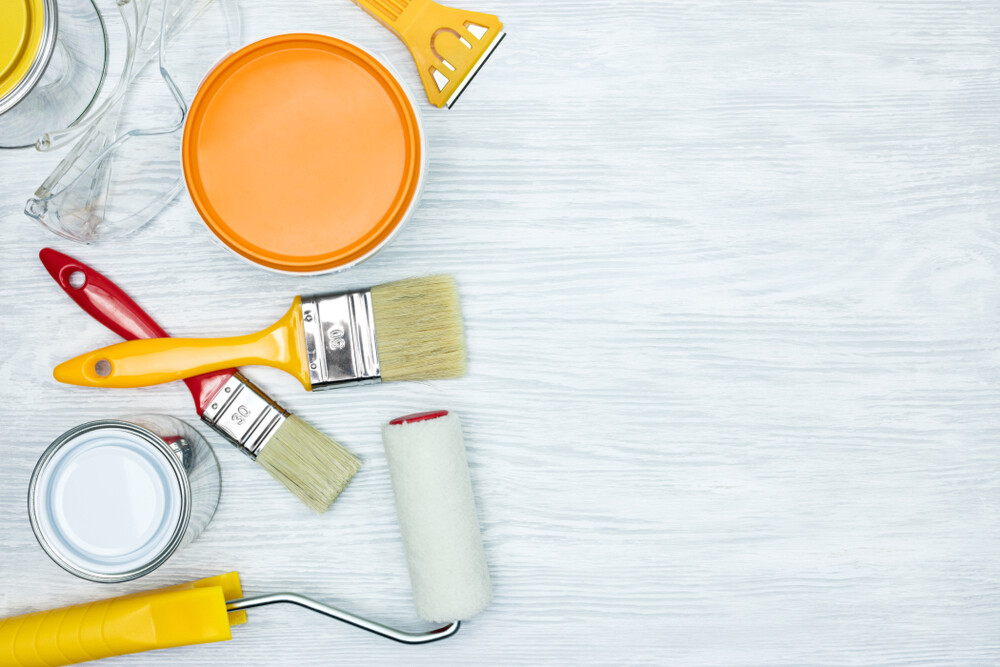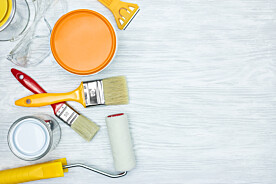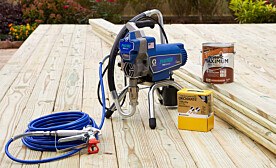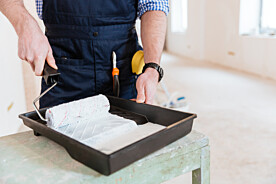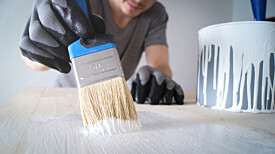Suddenly want to fix the scratches of your room? One day rolling on bed, a thought passes through your head while looking at old and unnoticed scratches on the wall of your room, ever happened? But you're stuck with lots of questions. aren’t you?
After giving it a serious thought, you have been thinking of doing it yourself to save money, want to be a paint junkie, move to a new place and transform an old junk house into a beautiful home, etc. The reason could be the anything, but still one question that you’ve been wondering:
What supplies do I need to paint a room ?
And suddenly, you are a blank slate at this time and giving up the idea of painting your room.
But don't you worry! We are here providing a check list for you :
Set up material :- before jumping to the fun part we need to prepare walls, patches, holes etc . to get the best result. For this, you will be required following things:
- Spackle & spatula– Use to patch any holes.
• Metal paint scraper – Use to scrape off any peeling or cracking paint (if necessary) before sanding.
• Fine grit sandpaper – Use to even out rough texture and smooth down any bumps.
• Mild soap & water solution – Use to clean any dirt or grease off walls before priming.
• Painter’s tape – Use to tape off borders so paint doesn’t bleed into areas you are not painting; also use painter’s tape to cover hardware and outlets.
Painting Supplies
• Canvas tarp or plastic drop cloth – Use to protect floors and furniture. even use old newspapers in a pinch.
• Angled paint brush – Use to paint corners. Angled brushes help achieve clean edges without paint bleed, which can be tricky in corners if using a regular flat brush.
• 3-inch flat paint brush – Use for “cutting in”, which is the process of painting the border around the taped-off area.
• Paint roller frame & roller covers – Use a roller for the majority of painting, since it’s a much faster method than a brush.
• Paint tray – Use to hold smaller portions of paint as you work. Also useful to avoid dipping brushes directly into paint cans, which can contaminate paint with dust and dirt.
Paint
• Primer – Primer is an undercoat applied before color. If you are painting over an existing color, primer covers the existing color and creates a blank slate so the new color will go on evenly and require less coats. so you can achieve a much more polished result in a shorter amount of time.
• Interior Paint – Finally, the fun part! Beyond choosing the color, there are different types of paint and each type is suited for different purposes.
- Flat paint is suited for low-traffic areas and ceilings, since it provides a dull, no-gloss finish and is harder to clean.
- Satin and Eggshell paints are suited for higher traffic areas (e.g., living and bedrooms) since they are easy to clean and offer light-reflective qualities that are desirable in most rooms.
Semi-gloss and High-gloss paints are suited for trim, windowsills, banisters, or smaller surface areas;
For those who are giving it up, now you can paint with integrity supply: “You are a canvas to create your own divine masterpiece”.

